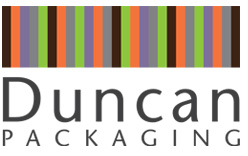Depending on the product being made and the size of the production run, we have numerous different ways of manufacturing your packaging. This guide will introduce you to the most general artwork rules for boxes, however, due to bespoke nature of our service, some minor alterations to your artwork may be required in order to produce your job to the highest possible standard.
FILE TYPES
We can accept most file types but our preferred file types are: .pdf, .ai, and .eps. Due to the large file-sizes created, we would recommend against using Photoshop or similar photo manipulation software to lay-up finished artwork unless absolutely necessary.
LAYERS
Whenever possible, please save your artwork on a separate layer to die lines, otherwise there is a possibility we may not be able to remove it for printing.
COLOUR
When creating your artwork, please ensure that all graphics and colours are saved in CMYK instead of RGB. Please only use Pantone colours for screen printing and flex printing jobs.
IMAGE RESOLUTION
Check image resolution in order to provide the best quality print. If images are at resolution of 150dpi or lower at 100% scale this can result in a loss of sharpness and “pixelated” look (straight lines will have a “staircase” effect).
For best results, all artwork and images should be a minimum of 300dpi at finished print size and embedded within the artwork. If you are not sure about the resolution of your image, zoom in to 300% and if you can see pixels, it is likely you will see them when the artwork is printed too.
TEXT FONTS & TYPE
In order to ensure your custom packaging prints correctly, all text and line art graphics must be converted to vector outlines.
For digital and lithographic printing, we prefer vector text but can accept text and logos made up of high resolution bitmap graphics.
For screen and flexographic printing, all graphics including text must be submitted in vector format.
We recommend using size 10 and larger for fonts, and using a heavier weight for text that is reversed-out.
BLEED
Bleed is a printing term that refers to printing that goes beyond trim marks. In other words, the bleed is the area to be trimmed off. Furthermore for packaging and displays, bleeding is required internally for each panel over crease lines. Artwork including background images and fills which are intended to extend to the edge of the panel must be extended beyond the cutter/crease line to give a bleed.
Failing to provide bleed in your artwork would result in finished pieces showing a thin area of white or brown unprinted board on the edge.
